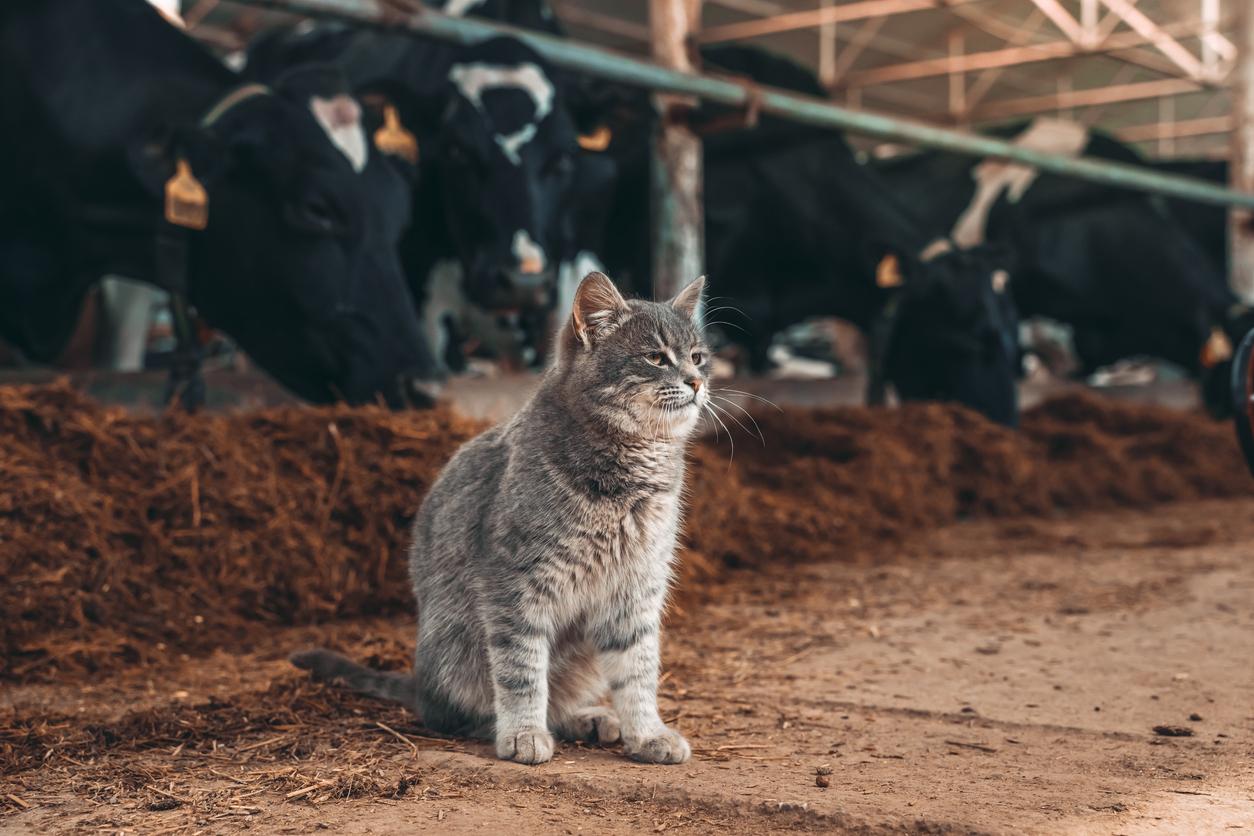The US Department of Agriculture (USDA) Animal and Plant Health Inspection Service yesterday announced that tests have now confirmed highly pathogenic avian influenza (HPAI) in a New Mexico dairy herd and that the virus has now been confirmed in five more Texas dairy herds.
Part of quickly evolving developments, the announcement came shortly after Texas health officials and the Centers for Disease Control and Prevention (CDC) announced the first human case, which involves a person from Texas who had contact with dairy cattle, highlighting the risk to farm workers.
And in another development, Texas officials yesterday said that cats showing illness signs in the dairy farm settings were also positive for the virus.
So far, the virus has now been confirmed on seven Texas farms, along with two in Kansas, and one each from New Mexico and Michigan. The USDA National Veterinary Services Laboratory in Ames, Iowa, is working to confirm a presumptive positive from a dairy herd in Idaho.
Cats tested positive in Texas farm sampling
Following yesterday's announcement of the first human H5N1 infection linked to dairy cow exposure, the Texas Department of State Health Services issued a health alert that urged health providers to be vigilant for people with symptoms from H5N1, especially those who have had contact with potentially infected animals.
It also noted that in March, investigators collected samples from several animals in Texas and Kansas. Wild birds, cats, and dairy cows were tested because they showed illness signs. "Further testing of these samples indicated the presence of avian influenza A(H5N1)," the TDSHS said. A press officer from the TDSHS confirmed in an e-mail that sick cats tested positive for the virus.
The Texas Animal Health Commission said in an e-mail that it has received lab confirmation of HPAI for three cats.
Wild birds on affected farms had earlier tested positive for H5N1, and evidence is growing that the virus may be spreading cow to cow. Investigations are still underway to sort out how the virus is spreading on farms, which includes identifying the extent of virus circulation in other animals or wildlife.
Cats are among the mammals previously known be contract H5N1, with infections reported in the United States, Poland, and South Korea.
Genetic sequencing yields more information
Virologists are also looking for clues as genetic sequences in US ruminants and wild birds are uploaded to public databases.
Louise Moncla, PhD, assistant professor of pathobiology at the University of Pennsylvania School of Veterinary Medicine, yesterday said on X (formerly known as Twitter) that USDA scientists have rapidly sequenced full genomes and that she and her collaborators have added them to the Nextstrain visualization tool, which allows scientists to map the family tree of virus sequences.
She said sequences from the dairy cows nest with those from wild bird samples collected from Texas about the same time. However, the goat samples from Minnesota are most similar to a pheasant sequence from Colorado.
Moncla said none of the PB2 sequences have known adaptive markers, and the similarity of internal genes from wild bird and cattle sequences suggest direct transmission from wild birds.
The cases are unusual, because influenza A had never been reported in ruminants before, she said. "Following up on these cows, and keeping an eye on other species will be important going forward."
Who's most at risk on dairy farms?
Federal health officials have said the avian flu outbreaks in dairy herds and the new infection in Texas doesn't change its threat assessment, which is low for the public. They have also emphasized the safety of the nation's milk supply due to safety nets including pasteurization, while warning against drinking raw milk that can harbor pathogens.
In the latest Moos Room podcast, Joe Armstrong, DVM, a cattle production expert with the University of Minnesota, urged dairy farm operators at farms where the virus is confirmed or suspected to focus on those at greatest risk, especially if personal protective equipment is limited. The Moos Room podcast is part of University of Minnesota Extension outreach.
He said the most at-risk groups are anyone who works with raw milk, including those in milking parlors, employees who work with calves, and people who work with bulk tanks. He also said those with immunocompromised conditions, such as pregnancy, are at greater risk.
Armstrong also urged dairy operators to ensure that workers, including those from other countries who don't speak English as their first language, know the illness symptoms to report. "They may or may not be willing to seek medical help when they need it."
"If you are out there and you have employees who fit that description, you need to be advocating for them and watching out for them," Armstrong said. "Check in with them, make sure everything's OK. Make sure they understand what's happening."
Note: This story was updated at 4 pm to include more information on cat samples from the Texas Animal Health Commission.



















